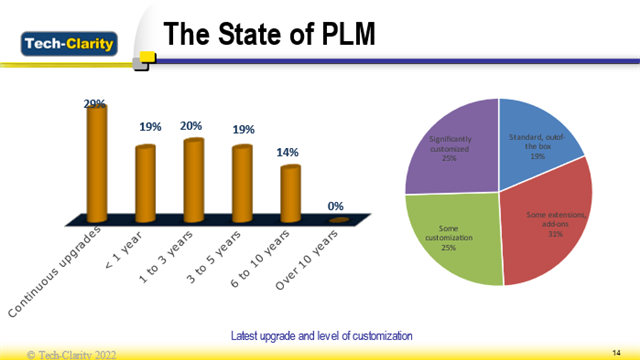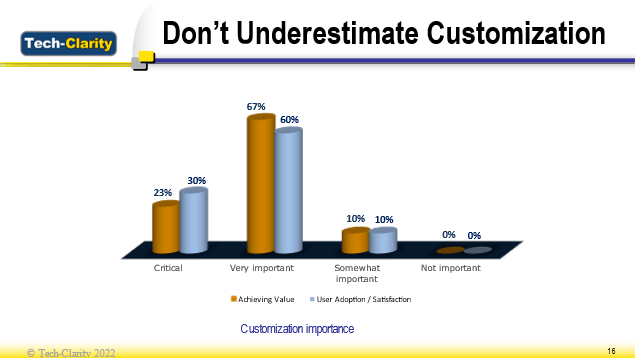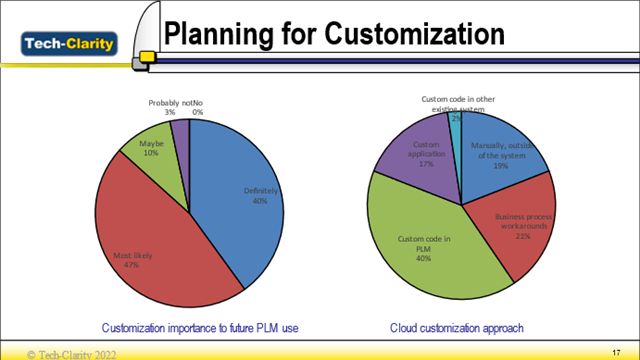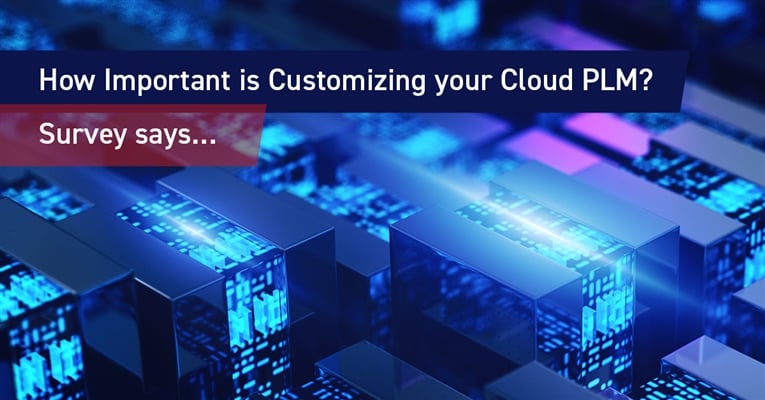On June 30, Aras hosted Jim Brown, president of Tech-Clarity, for the webinar, “How Fast is PLM Moving to the Cloud?” During the session, Jim discussed findings from Tech-Clarity’s recent survey on the state of PLM and the changing attitudes of companies moving their PLM solutions to the cloud. While the survey and webinar covered a multitude of themes, I found the most exciting topic to be the views of PLM leaders regarding the need for solution customizations even as they move to the cloud.
Right from the start, the survey results and analysis clearly indicated manufacturers now favor the cloud with three-quarters of companies favoring, preferring, or mandating the cloud for their new software selection. While this is no surprise, companies also suggested they are unwilling to reduce the scope of functionality available from their highly customized applications today. Again, this is to be expected considering the significant investment companies have made customizing their existing PLM solutions over time. But since the intent of many cloud/SaaS solutions is to limit or even restrict company-specific customizations, how will customers manage their unique requirements in future cloud solutions? Will companies be able to use their out-of-the-box PLM solutions?

Considering the survey feedback shows less than 20% of companies are working out-of-the-box today, the answer is likely to be no. (I’m being generous, the answer is definitely, no.) In addition, respondents sent a clear message that existing PLM customizations are “very important” or even “critical” to achieving business value and user adoption of the system.

When trying to reconcile these individual points, you will see an obvious contradiction. How will companies move to the cloud and leverage the proven benefits of a cloud deployment while also maintaining their existing, customized functionality? Will they be empowered to continue enhancing their PLM environment in the future? According to the survey, 87% of PLM leaders felt that customizations were “definitely” or “most likely” necessary if they were to continue their PLM journey to the cloud. This indicates the PLM cloud solution itself must embrace capabilities to customize the solution while not impeding the ability to easily implement future software upgrades by the software provider.

After reviewing the results of Tech-Clarity’s survey, Jim and I spoke about Aras Enterprise SaaS and the ways this solution aligns with the survey feedback and what we hear from our customers. We discussed how the Aras SaaS offering provides customers with the same capabilities and applications in the cloud that it provides as part of an on-premise deployment. Aras Enterprise SaaS supports unlimited customizations and offers the capability to create unique solutions with no limit to complexity in the cloud. Extending the conversation about customizations, we also discussed the fact that our Enterprise SaaS solution includes Aras DevOps, the deployment framework preconfigured to work with the Aras platform. The solution automates and optimizes system change processes to power a DevOps culture. Differentiated from any other PLM SaaS offering, Aras Enterprise SaaS is built for resilience, encouraging customizations by providing the tools and processes to ensure the speed and quality of future deployments.
As a final topic, we discussed the ability of our SaaS offering to eliminate compliance issues, risks, and the associated liabilities of systematic updates by delivering upgrades on our customers’ schedules.
You can read more about Tech-Clarity’s survey results in their eBook, "The State of Cloud PLM 2022." In addition, a replay of the “How Fast is PLM Moving to the Cloud?” webinar can be found here.
Five Hot Topics and Takeaways:

- Part of the reason for the initial delay (in cloud adoption) was a lack of capabilities in earlier versions of cloud PLM.
- Today companies need business agility, but older PLM implementations hamper the progress they can make and the value they can get from their PLM solution. This situation is creating an accelerated uptick in cloud PLM adoption.
- Not a question of “if” companies will move their PLM to the cloud, but more of a question of “when” and “how”.
- Companies need to focus on a PLM solution that has the rich capabilities that supports their business needs. It doesn’t make sense to get the cloud benefits unless the solution can meet the requirements of the business.
- “It doesn’t matter if the investment ROI goes down if the return goes down even more.” – Jim Brown
- Companies need to consider the solutions ability to customize and control the timing of upgrades. The cloud architecture is critical to support the value of the solution.

